Protein – how much do we need?
What Protein Does for Us
Protein is the body’s building block. All of our organs, including the skin, are built from proteins, as are the muscles, hair and nails. Many hormones, immune system, digestive system and blood all rely on it to work correctly.
If our diets contained no protein our bodies would start to break down muscles in order to produce the quantity it needs – our bodies are good at storing fats and some sugars but not good at storing proteins. It is therefore necessary to continually replace the protein that our bodies use.
How much do we need?
To calculate roughly how much you need to consume daily: multiply your weight in kilograms by 0.8. The answer is the number of grams you should consume every day. Therefore if you weigh 100kg you should be consuming around 80grams of protein a day.
A simple way to think about protein intake is to think about protein-rich foods making up a quarter of your diet – with a further quarter being carbohydrates and the other half being fresh fruit and vegetables.
If we exercise more our appetites generally increase, so we eat more – the above ¼ protein rule still works as a general guideline.
Food Rich in Protein
Although most food and drinks contain some, certain types of food are richer in protein than others.
As meat can also be high in saturated fats, lean cuts of meat are better as they contain less saturated fat. A piece of lean meat (beef, pork, lamb or chicken) about the size of a pack of playing cards will contain approximately 20 grams of protein
Salmon, trout, mackerel, sardines, pilchards, herring, kipper, eel and whitebait are termed oily fish, approximately 140 grams of oily fish will contain 20 grams of protein.
Other fish – cod, plaice, tuna and seafood like lobster and crab are also high in protein but usually in slightly lower quantities, about 150 grams of these fish types contain 20 grams of protein. Fish eggs, namely Roe and Caviar are also good sources of protein.
Boiled and poached eggs are better than fried as they will contain less fat.
For example, 200ml (1 cup) of semi-skimmed (2%) milk contains about 8 grams of protein.
Protein comes from the milk and not fat in milk, skimmed and semi-skimmed milk have had much of their fat removed and therefore contain more protein per ml than whole milk (and more calcium too).
Other dairy products are good sources too, cheeses, yoghurt, fromage frais and sour cream. These products can also, however, be high in fat. Low fat alternatives usually have the same, if not slightly more, protein per gram than the full fat versions.
Mature soya beans contain nearly 40% protein; soya products such as soya milk and tofu are also good sources. Many other types of beans – black beans, pinto beans, kidney beans, butter beans and lentils are all important sources of protein. Peanuts (which are actually beans and not nuts) contain almost 25% protein – peanut butter is therefore a good source of vegetable protein, although it can contain a lot of fat and salt.













Leave a Reply